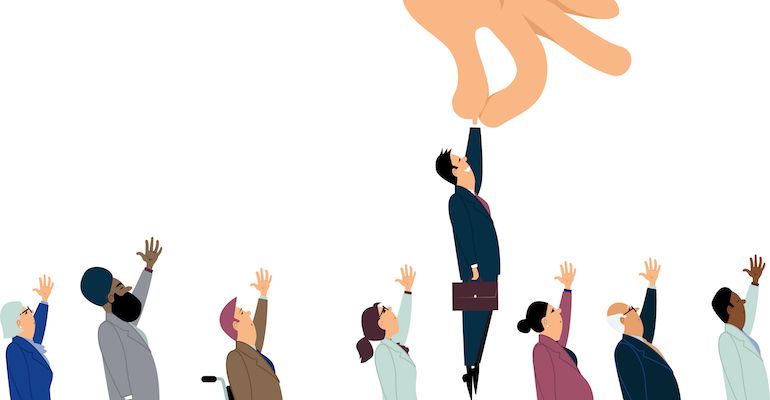By: Dr. Muhammad Akram Zaheer
Discrimination is associated with depressive symptoms and other negative health effects, but little is known about the mental health risks of gender discrimination in the workplace. Our aim is to investigate the association between gender-based discrimination in the workplace and depressive symptoms in women workers in South Korea. Gender is a social status, a legal name, and a personal identity. Through gender socialization, gender segregation and the associated norms and role expectations are integrated into the larger social institutions of society economy, family, state, culture, religion and law into the social gender order. Boy and girl, men and women are used when talking about gender.
Gender is generally defined as duality. In other words, gender is generally viewed as a division into two opposite subcategories: male and female. Recent literature challenges this definition, pointing out that sex, or genetics as determined by the chromosomes and often the sexual reproductive organs, makes a person male or female. However, gender is different from gender. It is not contradictory but connected.
There is a constant and growing body of research on gender roles, but traditional theories address the status of women in the Islamic context. The theoretical framework employed by traditional research is clearly gendered. What is the impact of Islamism in Pakistan, what role is expected of a Muslim woman in a Muslim country, on the other hand, the feminist movement has only focused on the insufficient representation of women in all parts of Pakistan to promote Pakistan as one country. The Islamic State can formulate guidelines. Gender is generally understood as a set of culturally and socially constructed norms and values based on provocative assumptions about masculinity and femininity.
Discrimination is defined as “discrimination against individuals or groups based on arbitrary descriptive or subjective criteria such as sex, race, religion, age, marital or parental status, disability, sexual orientation, political opinion, socioeconomic background and trade union membership. One explanation is discrimination in the workplace. However, part of the difference can be explained by the different characteristics of women compared to men, such as: the choice of occupation and the decision to remain in the workplace.
Gender discrimination in the allocation and use of resources in the workplace is not uncommon, even in more developed countries .The term “gender discrimination” in the context of the workforce can be defined as unfairly favoring members of one group over members of another group۔۔ Ivancevich describes the courts’ decisions and writes that US courts, in interpreting Title VII of the Civil Rights Act of 1964 and other statutes, have found that both intentional (unequal conduct) and unintentional (unequal effects) exist. Organizations can create discrimination in illegal work.
Although in some cases gender roles and expectations are challenged, much of society labels traits, behaviors, roles and even career choices as gendered. Deviations from the norm in assumed roles and expectations can have serious consequences. People have even lost their lives in gender wars. Some occupations are also associated with adult females or females, including human service occupations including but not limited to childcare, retail, nursing and teaching. On the other hand, specific jobs associated with mature males or males include jobs in finance and commerce, construction jobs, science-related jobs, and agriculture. When these roles and expectations are challenged, results emerge, whether the response is a change in internal bias or an external one.
Women and their families around the world are adversely affected by gender discrimination in the workplace. In fact, women do not have the same opportunities for advancement and mobility in managerial positions compared to their male counterparts, even if they are hired. Men are rapidly climbing the ladder to supervisors, managers, directors, and VIP positions, while women, regardless of achievement, commitment, work ethic, education, or experience, are discouraged from being appointed to managerial positions. Women’s labor market participation remains low due to fewer employment and advancement opportunities, cultural and social barriers, discriminatory environments and low wages. Furthermore, their economic efforts are hardly noticeable as the majority of women work in the informal sectors of the labor market. A surprisingly large majority of the population is economically, politically and socially deprived of their human and legal rights. Abuse of women is widespread in Pakistan and deprivation of inheritance rights is not uncommon. Their efforts to assert legitimate rights are largely in vain as they face discrimination in every profession and their male counterparts enjoy benefits in that society, including access to job opportunities. Human rights activists, feminists and economists support women’s participation in economic activities. With women making up almost half of the world’s population, there is a global recognition and effort to increase their participation in a country’s total workforce, based on the belief that human resource development cannot be achieved without women’s participation.
All employees, male or female, are entitled to the same rights and opportunities provided by the employer or the applicable terms of the employment contract, free from discrimination or harassment. Every employee should have the same rights and opportunities to perform their assigned tasks without discrimination based on gender, disability, status or origin. This right is confirmed by Section 42 (1) and (2) of the 1999 Act which guarantees the freedom of all people from discrimination. The same constitution provides social goals and states that the state welfare system is based on the ideals of liberty, equality and justice. This clause applies to all areas of human endeavor, not excluding labor relations.
The International Labor Organization recognizes the elimination of discrimination in employment and occupation as a fundamental principle that all member states must respect. With the fact that Nigeria has ratified the ILO Equal Remuneration Convention 1951 and the Discrimination (Employment and Occupation) Convention 1958, protection against discrimination in Nigeria is still very weak as there are very few laws against it very few cases are still pending on them, making the case law on the subject non-existent or at best underdeveloped.
Discrimination in Employment and Occupation


